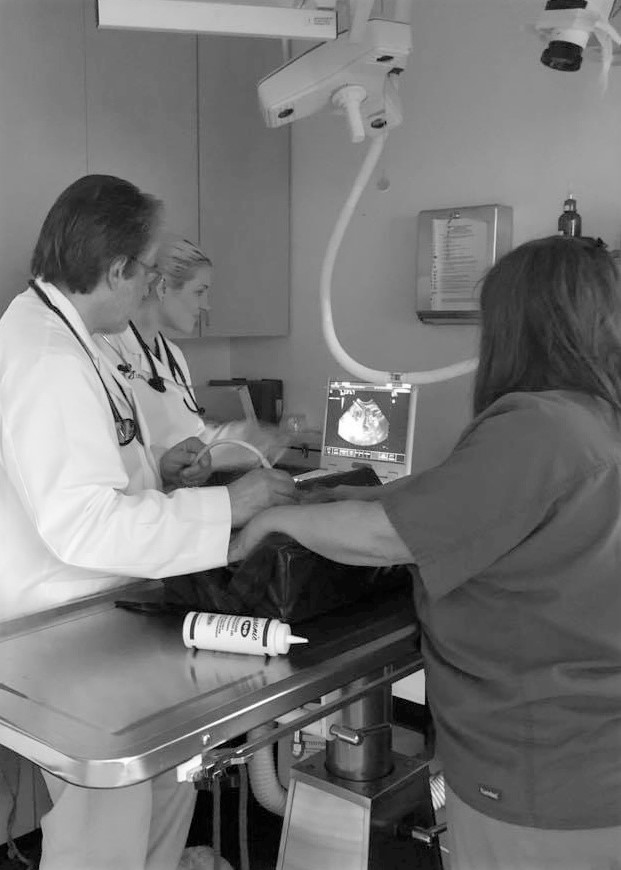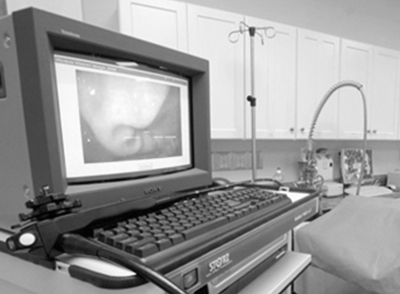UAH’s in-house laboratory and digital radiology suite is fully equipped with all the newest diagnostic and imaging equipment necessary to help quickly assess and diagnose your pet.
Our foremost concern is providing your pet with care that helps them avoid harmful diseases or conditions. As a result, we offer a wide range of thorough diagnostic testing, which can detect heartworm disease, Lyme disease, infections, feline leukemia, intestinal parasites, urinary tract infections, and many additional diseases and conditions that can go unnoticed in their early stages. Early blood testing can show evidence of disease such as diabetes, changes in liver or kidney function, or simply provide a baseline for future reference. Diagnostic testing is also included in pre-anesthetic screenings prior to dental or surgical procedures that require general anesthesia. Annual wellness blood and urine tests, along with other diagnostics, assist us in the early detection of diseases and health conditions.

We believe your pet deserves the same quality care as any other family member, and so the veterinary team at University Animal Hospital employs a digital radiography machine to help diagnose your treasured companion quickly and accurately. Our animal radiology utilizes the same technology used for humans to identify injury and disease. By using digital x-rays, diagnostic images appear on a screen within seconds, allowing our medical staff access to your pet’s radiographs almost instantly. This is crucial in emergency situations, as it allows our staff to begin your pet’s medical care more rapidly, x-rays can provide us with extremely valuable information to help assess your pet in a variety of situations.
Dental radiographs (x-rays) of the teeth are needed periodically to evaluate your pet’s oral health. X-rays aid our veterinarians greatly in detecting abnormalities that cannot be revealed by physical examination alone. In some cases, x-rays can confirm the need for extraction of loose or badly infected teeth.

Ultrasound is a valuable, non-invasive imaging procedure that complements veterinary x-rays and allows our veterinarians to better visualize internal organs in the chest and abdomen. During an ultrasound, high-frequency sound-waves are directed into the body and bounce off the organs, creating a computer image of the inside of the body. This painless, low-stress diagnostic technique rarely requires any sedation.
Ultrasound is invaluable for making treatment decisions for various types of heart disease. It also allows us to biopsy organs such as the liver and kidney through a tiny “keyhole” incision. Using the ultrasound image as a guide, surgical biopsies can be obtained without major surgery, and your pet can often go home the same day.

Endoscopy means “looking inside” and refers to looking inside the body for medical purposes. The instrument used for this procedure is called an endoscope.
Endoscopy is a minimally invasive, diagnostic, medical procedure commonly used to evaluate the interior surfaces of an organ by inserting a small tube into the body. Through the endoscope, the observer can view lesions on organs and other internal medical conditions.
In veterinary medicine, endoscopy is commonly used for tissue and organ biopsies, to remove foreign objects (particularly in the stomach) or get an inside view of a particular part of your pet’s body. Even though anesthesia is required to keep your pet still during the endoscopic procedure, compared to a traditional surgical procedure, the amount of anesthesia and recovery time is greatly reduced. Endoscopy is often indicated when routine blood and urine tests, radiographs or ultrasound do not give the complete diagnostic picture.
The endoscope is composed of a long tube (flexible or rigid), a light source, camera and viewing eyepiece. In addition to the fiber optic light source, there are two channels within in the tube. One channel is for passing forceps, snares or biopsy instruments, allowing for the removal of foreign objects, collection of biopsy samples and removal of small polyps or tumors. Air or water can be passed through the other channel for better viewing of the tissue or organ. Compared to traditional surgery, the benefits of endoscopy include shortened anesthesia time, decreased inflammation, less physiologic stress and discomfort and an earlier return to normal function. Even though general anesthesia is required for an endoscopic procedure, it is still considered much less invasive than traditional pet surgery due to the relatively short procedure time and low occurrence of complications.
